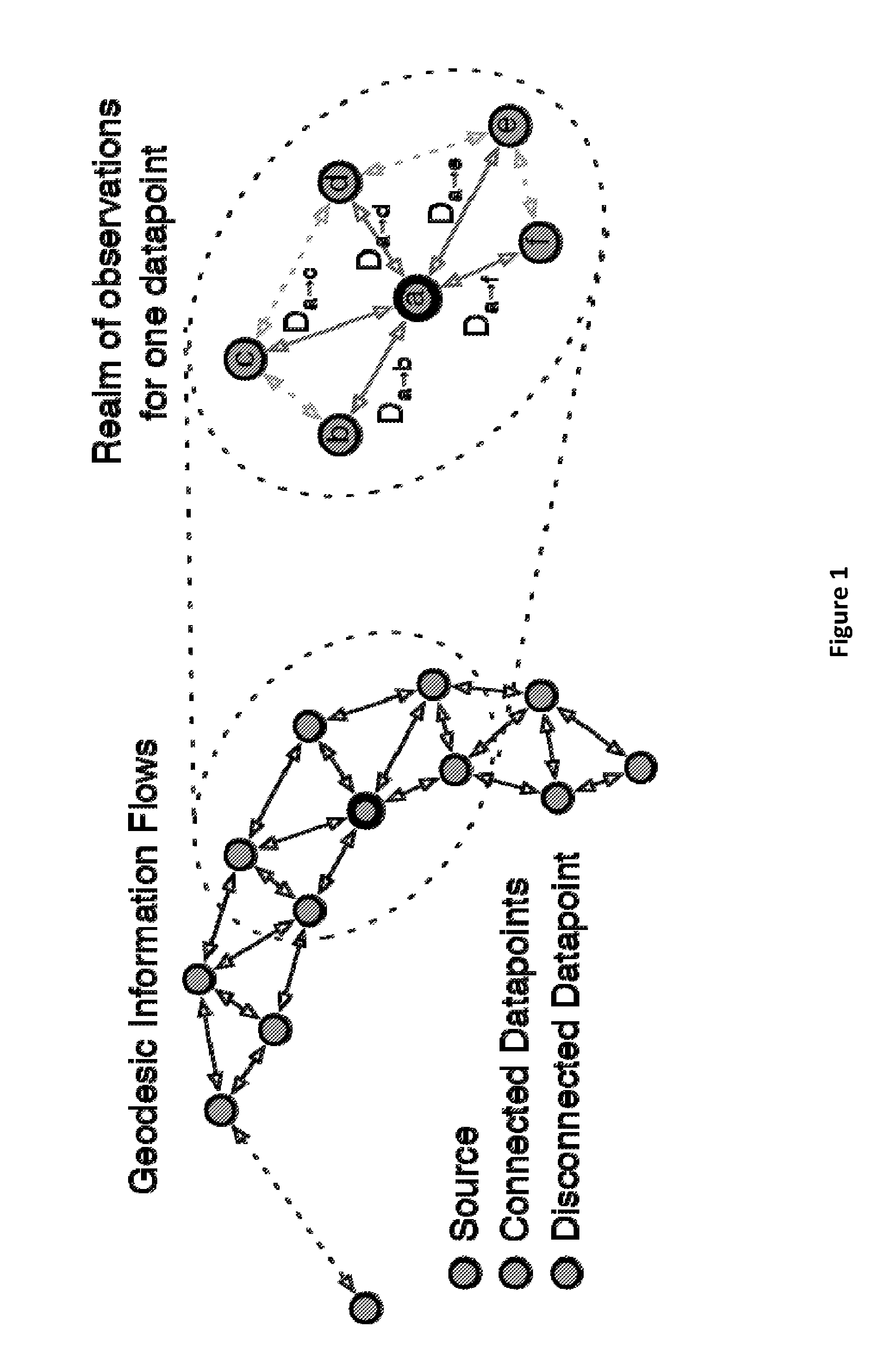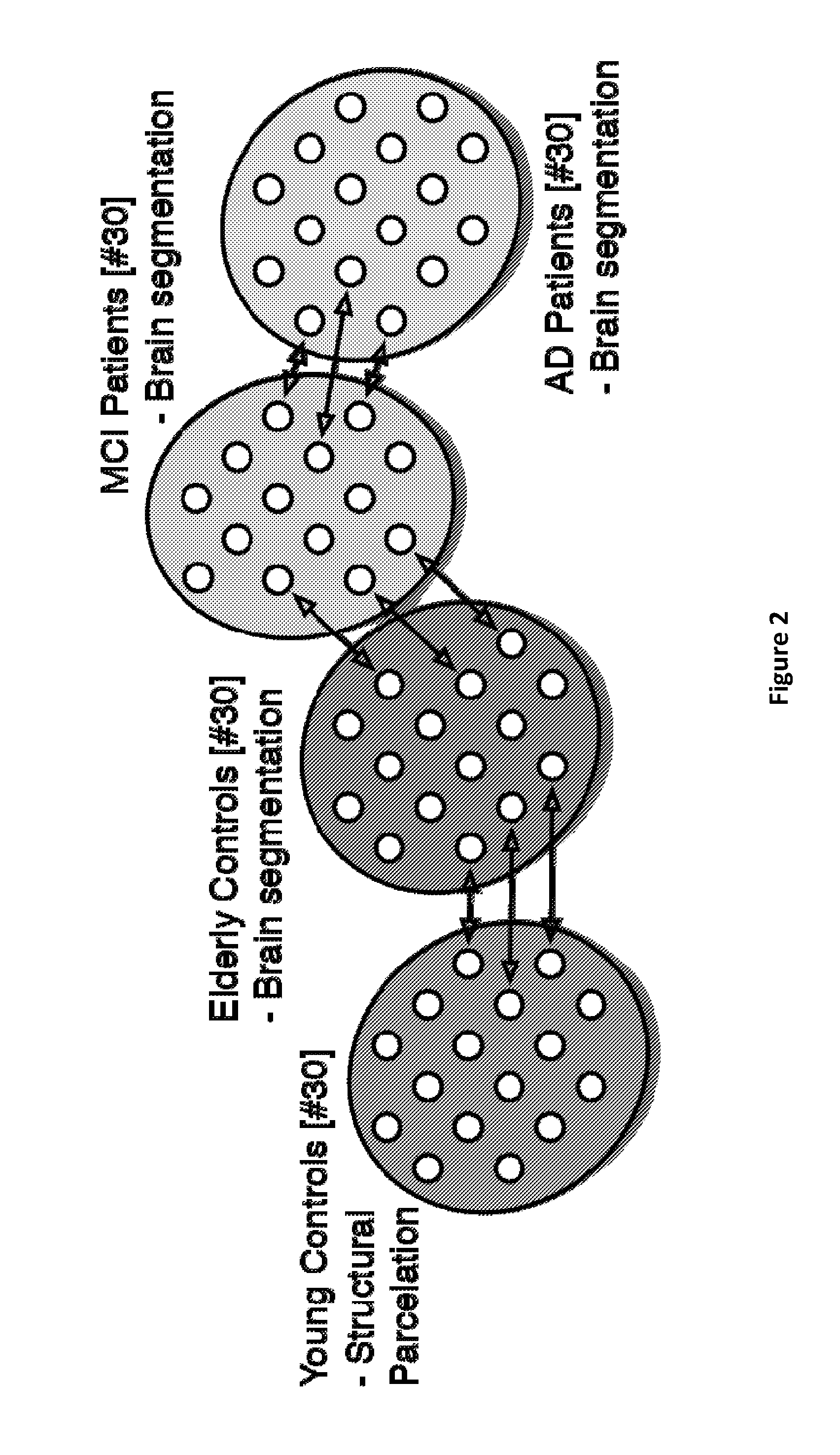System and method for annotating images by propagating information
a technology of propagating information and annotating images, applied in image analysis, image enhancement, instruments, etc., can solve the problems of large residual information that the transformation contains, the subject cannot be perfectly mapped, and the residual information is significant, so as to improve the accuracy, increase the robustness and accuracy, and improve the effect of accuracy
- Summary
- Abstract
- Description
- Claims
- Application Information
AI Technical Summary
Benefits of technology
Problems solved by technology
Method used
Image
Examples
Embodiment Construction
Methods
[0032]We first introduce the mathematical framework and the undirected graph for geodesic information flow, followed by the introduction of a distance metric that describes both image intensity similarity and morphological similarity between images. Finally, after building the graph embedding, the geodesic information propagation step is presented for two types of information: numerical and label attributes.
The Implicit Local Data Embedding
[0033]Let a set Y with R images be the full set of observed grey-valued anatomical data with the a-th image of this set denoted by Ya Each image Ya is a vector of size Na, with its i-th voxel denoted by Ya,i.
[0034]In order to embed the observed data within a manifold, one normally starts by finding a distance between each pair of images. This distance provides insights about the global similarity between the images, and subsequently, about the manifold structure of the data. Theoretically, this global embedding assumes that one can represen...
PUM
 Login to View More
Login to View More Abstract
Description
Claims
Application Information
 Login to View More
Login to View More - R&D
- Intellectual Property
- Life Sciences
- Materials
- Tech Scout
- Unparalleled Data Quality
- Higher Quality Content
- 60% Fewer Hallucinations
Browse by: Latest US Patents, China's latest patents, Technical Efficacy Thesaurus, Application Domain, Technology Topic, Popular Technical Reports.
© 2025 PatSnap. All rights reserved.Legal|Privacy policy|Modern Slavery Act Transparency Statement|Sitemap|About US| Contact US: help@patsnap.com



